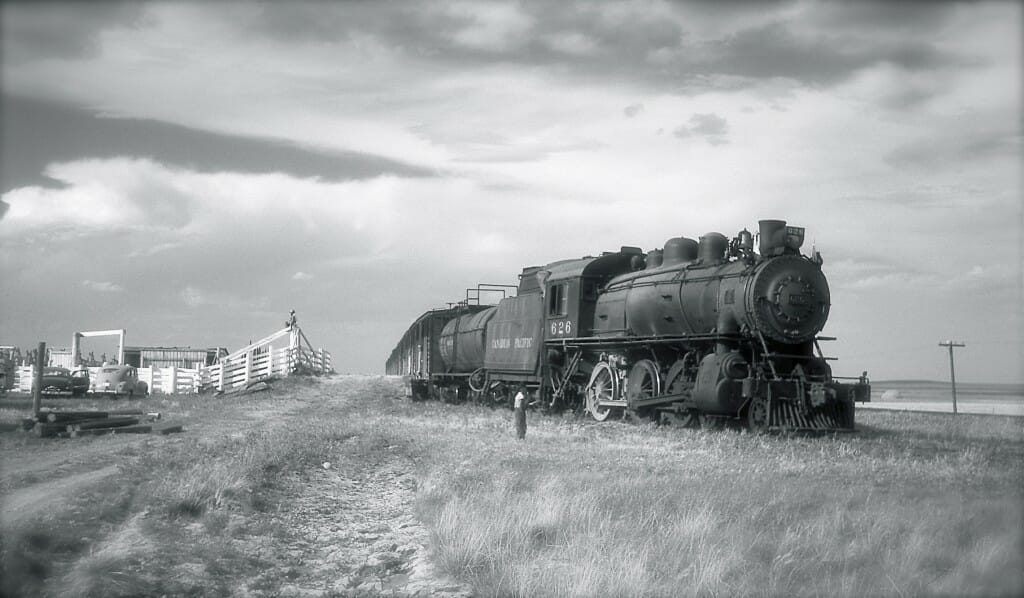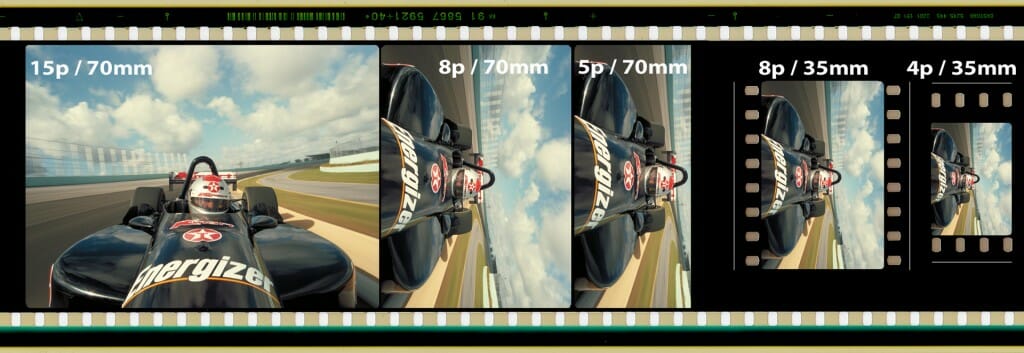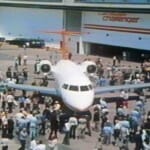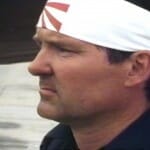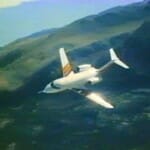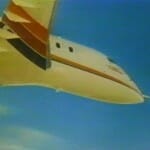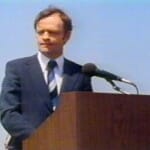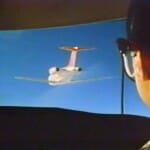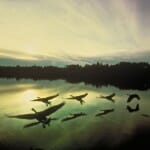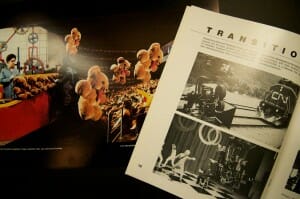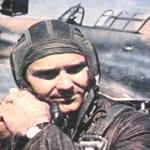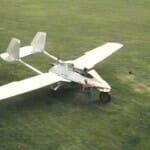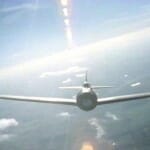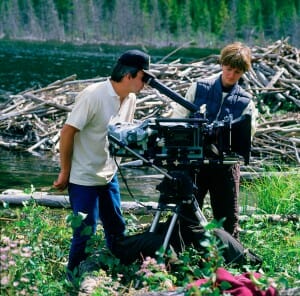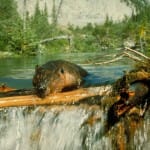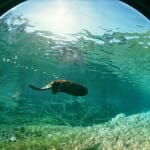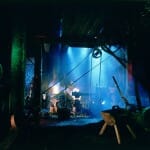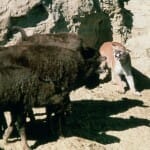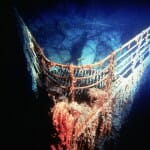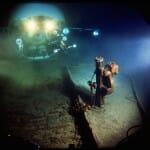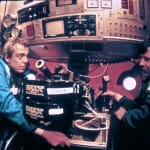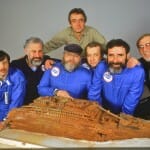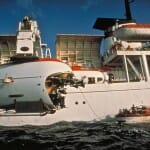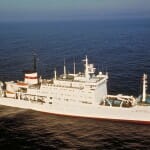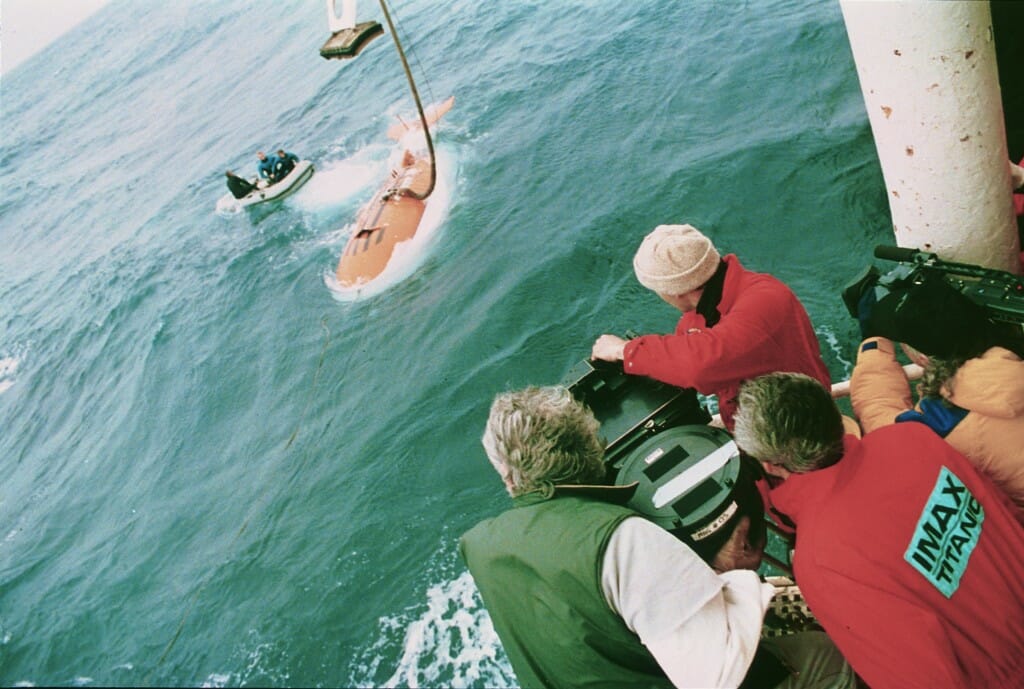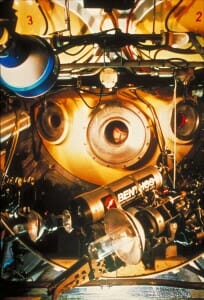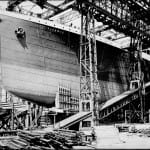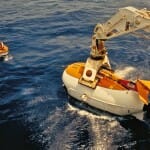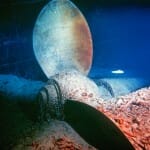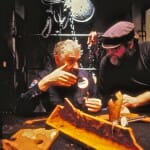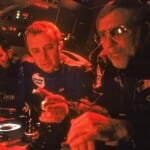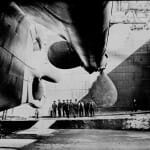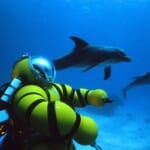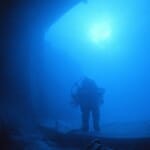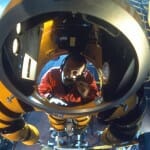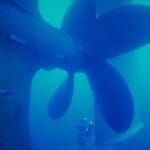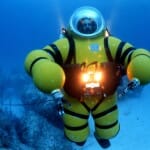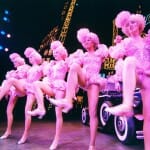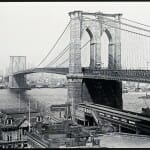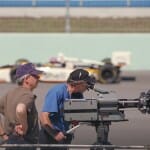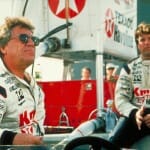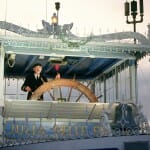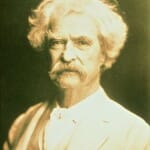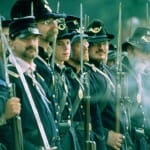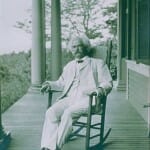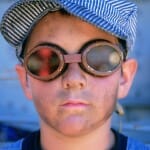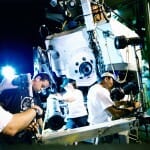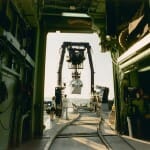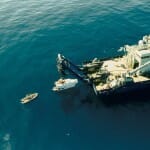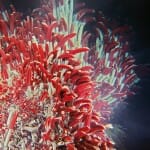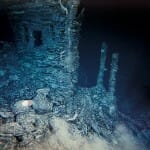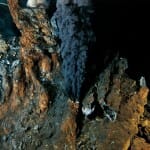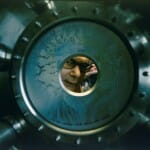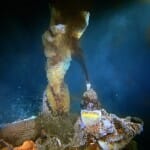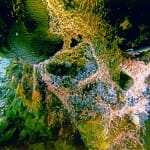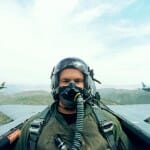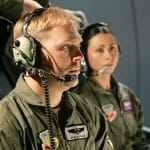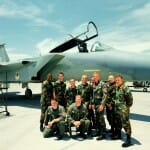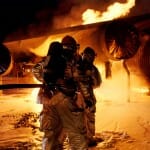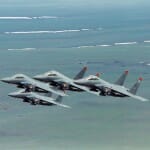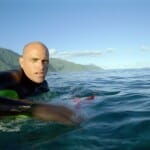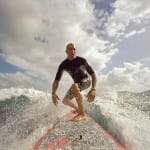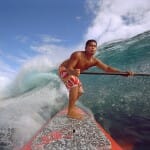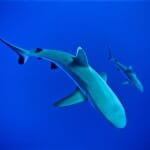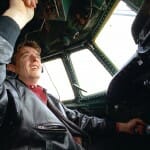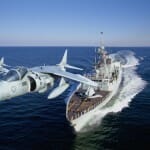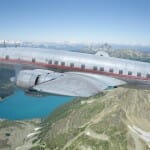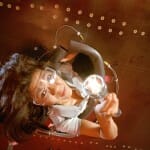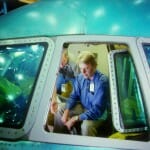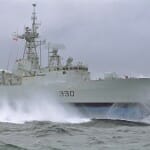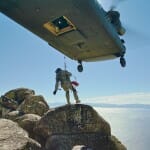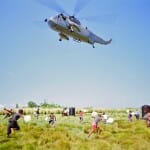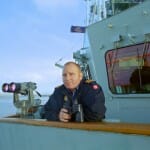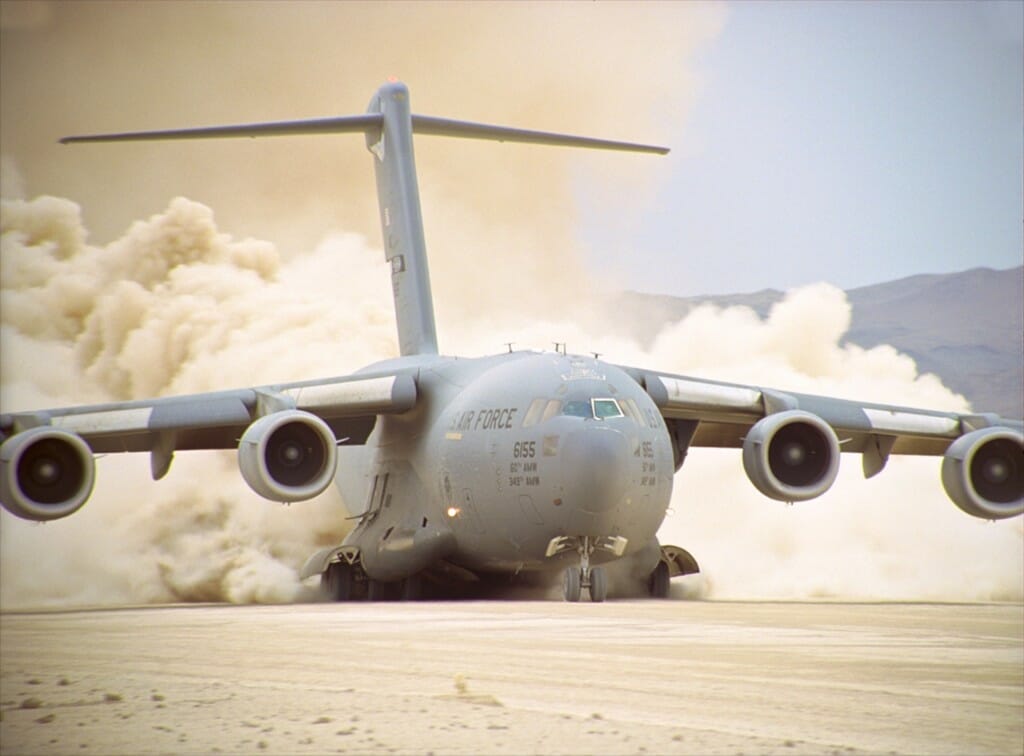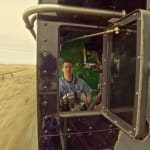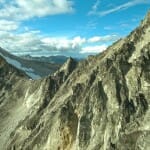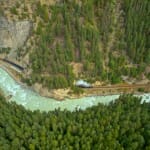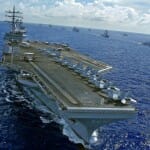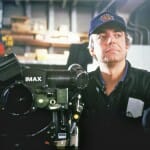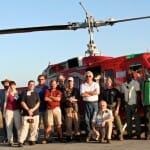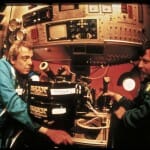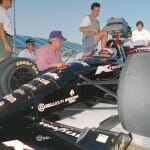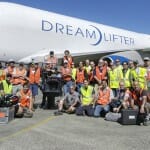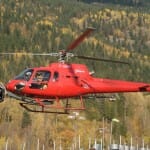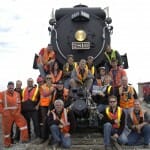Timeline
The Stephen Low Company is thirty-something, and celebrating!
Follow the evolution of filmmaker, company and industry with highlights from our work, our collaborators and our impact across the years.
Scroll through the decades in the timeline below. ↓
Once Upon a Time
Our story begins long ago with a young boy fascinated by trains and things that move.
Right: a young Stephen Low examines a steam locomotive at Cochrane, Alberta (circa 1958).
For a bio of Stephen Low, see: A Bit About Stephen
1967
A Revolution in the Making
Expo 67. A team of filmmakers pitches a unique pavilion concept for Expo 67 to the mayor of Montreal. The team has dreamed up a multi-chambered experience that includes a novel double-screen 70mm theater, a hall of infinity, and a 35mm multi-image presentation. Co-directed by Colin Low and Roman Kroitor—both from the National Film Board of Canada—the pavilion is inspired by the myth of the minotaur and the labyrinth. At the time, filmmaker Colin Low’s son Stephen is a mere 17-years-old, but in time he will go on to make his own contributions to the new giant screen medium. At Expo 67, the Labyrinth pavilion draws huge line-ups. Its popularity leads ultimately to a contract to develop the Fuji pavilion at Expo 70 in Osaka, Japan.
Right: From the Labyrinth scrapbook: a spread from Life Magazine (1967) showcases the multi-tiered chamber one—a double screen 70mm theater in the Labyrinth, a pavilion at Expo 67 in Montreal. →
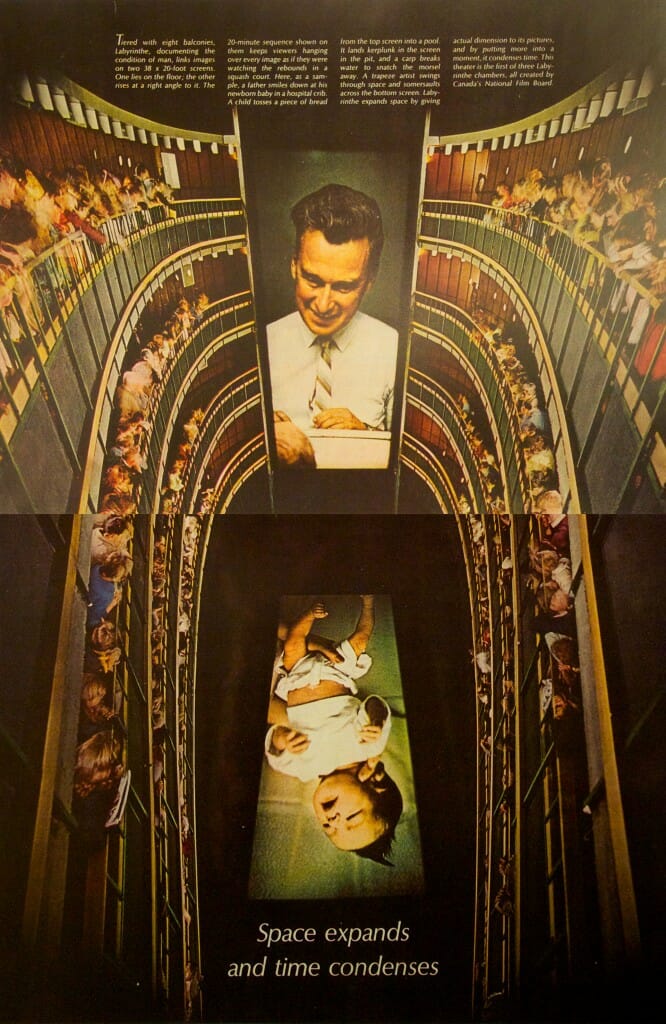
On the Way to Osaka
Colin Low consults on the Osaka project. The new pavilion will have a giant screen with a multi-image film presentation. To address the complexity, vibration and alignment issues associated with using multiple projectors to fill a giant screen, the group explores innovative solutions. Colin sketches nine 35mm motion picture images fitting together in a neat package on a piece of 70mm film oriented horizontally. The development of a revolutionary new projection system has begun. The team will have to tackle the enormous technical challenges of moving more 70mm film through a projector than ever before.
1970
IMAX at Expo 70 Osaka
The first IMAX projector is installed at the Fuji Pavilion at Expo 70 in Osaka, Japan. The installation will become the first of many IMAX® theaters around the world.
The New Projector
A New Cinema Format
Feeding 70mm motion picture film horizontally via a novel patented delivery system known as the rolling loop, the IMAX® film projector is able to project images of unprecedented clarity on a huge screen.
The film format is known as 15 perforation/70mm, the largest motion picture frame in use.
First Flights
The Early Films
Stephen Low’s first works as a filmmaker include three films on flight. Challenger: An Industrial Romance and The Defender are two award-winning documentary films produced with the National Film Board of Canada. Both are very different accounts of the birth of novel aircraft and the challenges faced by their designers and builders. The films offer up humor, lyricism, fantasy, folly, romance and heroism and reflect the young filmmaker’s own fascination with technology and commitment to good storytelling.
Skyward is Stephen Low’s first film for the giant screen, a groundbreaking IMAX project he directed after a stint as a researcher on the first IMAX space film, Hail Columbia.
1979
Challenger
Stephen Low’s first film, Challenger: An Industrial Romance chronicles the development of a new jet aircraft. The project was driven by Stephen’s conviction that a business story could and should be as engaging and inspiring as a romance or adventure story. Filmed in 16mm and produced by the National Film Board of Canada in collaboration with Canadair (now Bombardier) the film was released in 1979 and has won awards around the world. The Challenger jet also went on to become a major success, inspiring new generations of aircraft. The film includes breathtaking air-to-air footage of the new aircraft in flight as well as a brief speech by Jean Chretien, then Canada’s federal Minister for Industry, Trade and Commerce and a champion of the Challenger aircraft program. Chretien would later go on to be Canada’s 20th prime minister. More about Challenger: An Industrial Romance. See the film at www.nfb.ca
1985
Skyward
Wingtip to wingtip. The film Skyward re-defines “close-up” by capturing extraordinary, lyrical images of Canada geese in flying formation. The pioneering techniques in bird rearing and photography developed for the production laid the groundwork for many later filmmakers and for conservation projects seeking to re-establish migration routes of Canada geese, sandhill cranes and whooping cranes using an ultralight aircraft. Skyward premiered in 1985 as the feature attraction for the Suntory Pavillion at Expo 85, Tsukuba, Japan. More about Skyward.
3D
A New Revolution
A turning point in cinema took place in the summer of 1986 when a new film captured with a rig composed of twin IMAX cameras shooting through a beamsplitter was presented at the CN Pavilion at Expo 86 in Vancouver. Transitions was co-directed by Colin Low (Stephen’s father) and produced by the National Film Board.
Stereo movie technology had come and gone in waves for decades. Transitions however, demonstrated the enormous possibility of 3D created using the picture quality and precision image alignment possible with IMAX 15/70 motion picture technology. However, the spectacular results were obtained at enormous cost and technical complexity: with big cameras and double the film and logistical complexity of shooting the process was indeed daunting. Could this be the future of cinema? It would take at least another several years to find out for certain.
1986
The Defender
Maverick Wings. The Defender follows the trials and genius of maverick aircraft designer and restorer, Bob Diemert of Carman, Manitoba. Diemert dreams of building the world’s next great fighter plane. A worldwide reputation for restoring “warbirds” enables him to finance his project. A lively, funny and influential tale about a remarkable, modern-day folk hero, The Defender established Stephen’s unique filmmaking style and won awards around the world. Directed by Stephen Low, The Defender is a National Film Board of Canada production. More about The Defender. See the film at nfb.ca.
The Natural World
Skyward (1985) and its painstakingly captured scenes of Canada geese in flight established Stephen as a filmmaker with the drive to tackle the IMAX format and bring the natural world to an international audience at IMAX-equipped Expos and via a growing network of IMAX theaters. Stephen’s first three films in the format would treat nature subjects; a challenging focus for a very large and not very quiet 15/70 IMAX camera.
New Collaborations
Pietro L. Serapiglia joins Stephen for the production of a new project that will focus on nature’s greatest engineer: the beaver. Pietro shepherds the project through to completion and then goes on to distribute the film worldwide, beginning a collaboration that continues to the present with Pietro producing more than a dozen projects and steering worldwide distribution for the company. More about Pietro.
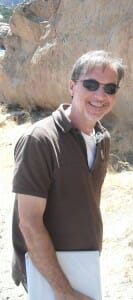
Alexander Low (Stephen’s brother) joins the team in 1988 to support distribution and will go on to write, produce and market films for the company. More about Alex.
1988
Beavers
Industrious Rodents with Buck Teeth. Released in 1988, Stephen’s second giant screen film Beavers demonstrates the tremendous potential of the giant screen for presenting natural history features and helps spur the development of IMAX theaters in natural history museums. Beavers delivers a humorous, intimate and emotive portrait of a family of beavers, taking audiences into the mysterious aquatic world of these shy creatures and elevating their struggles to giant screen scale. A furry family favourite, Beavers would go on to be actively exhibited for more than two decades and become one of the top-grossing Canadian motion pictures of all time. More about Beavers.
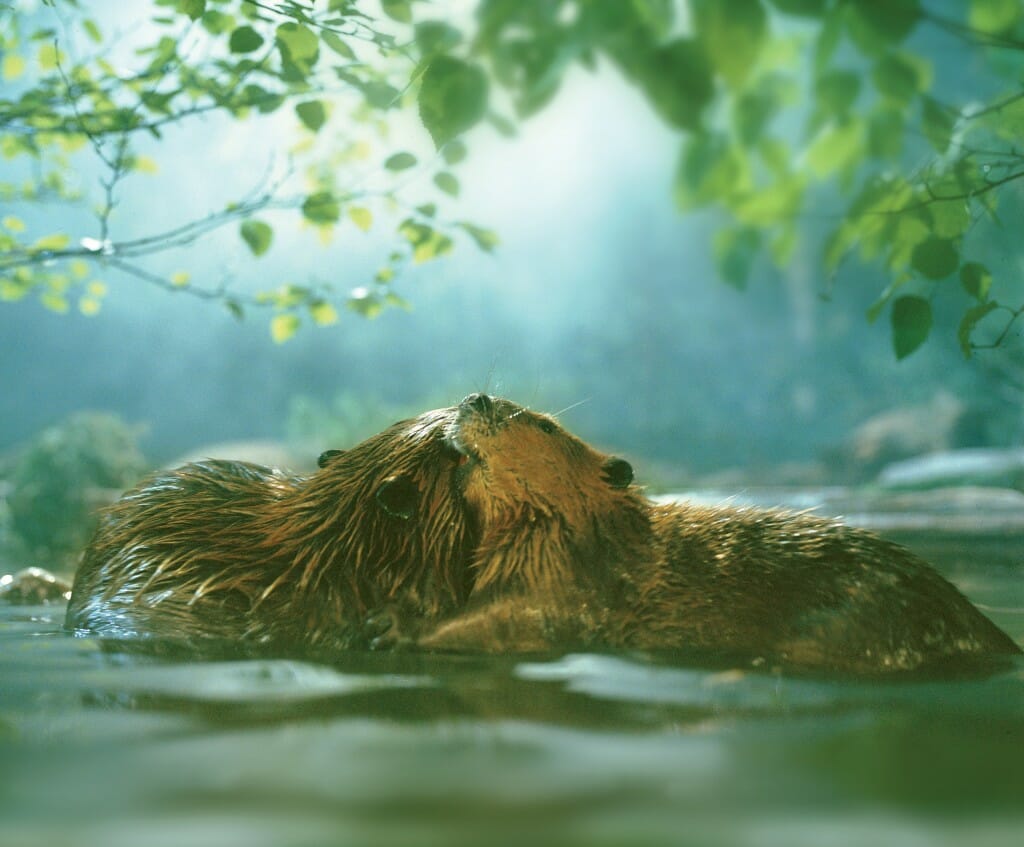
1990
The Last Buffalo
3D Develops Horns. A dramatic visual poem related without words, The Last Buffalo paints the magical relationship of a sculptor and the natural world he sculpts. The Last Buffalo was produced for the Suntory Pavillion at Expo 90 in Osaka, Japan.
To film wildlife with the giant new IMAX 3D rig, Stephen and his team had to bring the wildlife to the giant camera system—it was the only way. The Last Buffalo became the first giant screen 3D film to go on to broad release, forging a new marketplace for state-of-the-art IMAX 3D projectors and future films. The groundbreaking film demonstrated the potent immersive and storytelling power of 3D, proved the potential of the medium and ultimately helped drive the rebirth of 3D as a worldwide phenomenon and the growth of IMAX 3D as the leading technology. The Last Buffalo will include a collaboration with film editor James Lahti that will continue for many future films. More about The Last Buffalo.
1991
To the Titanic
Light in the Deep. Spearheaded by The Stephen Low Company with the technical support of the Russian P.P. Shirshov Institute of Oceanology, the Titanica expedition was the first to extensively light and film the wreck site of the Titanic 12,500 feet below the surface of the Atlantic. Employing newly developed deep sea HMI lighting technology and the world’s largest film format Titanica established a poignant and definitive film record of the great wreck. The film will inspire later Titanic fictions.
Deep Vistas
Penetrating the Abyss
The Titanica expedition marks a giant leap forward for the IMAX Experience, taking audiences into one of the great frontiers of science and of cinema—the real deep ocean. The deep is not the shallows of our beaches, estuaries and coastlines, or sunny reefs, but the real abyssal ocean, a dark region that represents by volume, the vast majority of our planet’s biosphere.
The Titanica project will help set the stage for the production a decade later of another groundbreaking ocean film by the company: Volcanoes of the Deep Sea.
1992
Titanica
Launch of Titanica. December 3, 1992: the world premiere of Titanica takes place at the Canadian Museum of Civilization. Titanic survivor Eva Hart is on hand as a special guest. Also in attendance is filmmaker James Cameron, future director of the fictional dramatic feature “Titanic”. More about Titanica.
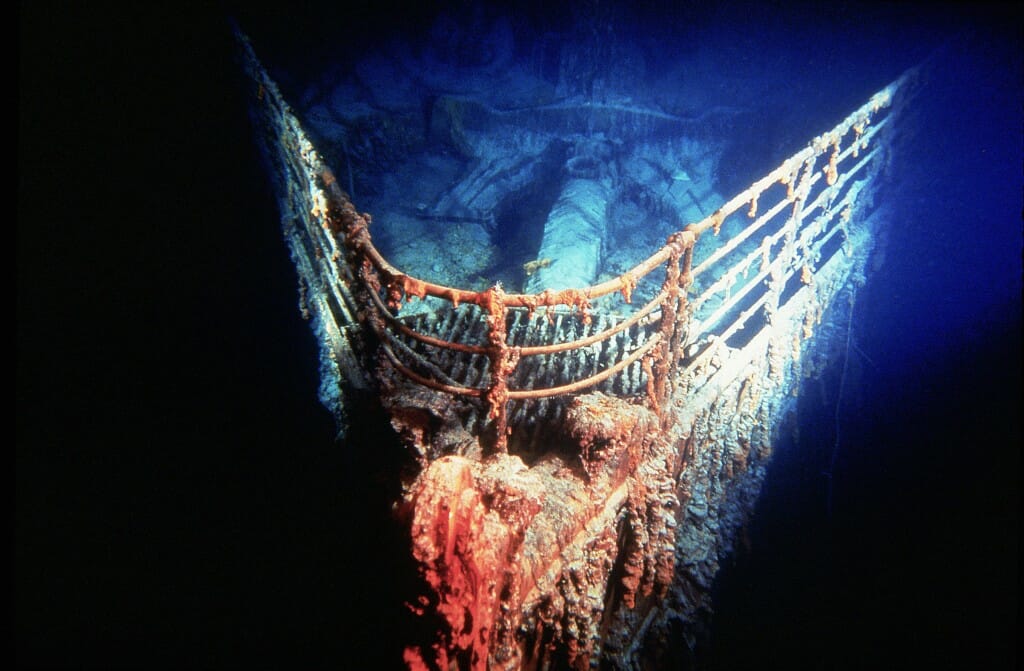
The bow of RMS Titanic at a depth of 12,500 feet, captured for Titanica.
1993
Flight of the Aquanaut
Diving Adventure. Filmed almost entirely at depth on a shipwreck off the Bahamas, Flight of the Aquanaut demonstrates new dramatic possibilities for the large format. Captured by rotating SCUBA teams working at a depth of 100 feet—far deeper than typical Hollywood productions—Flight of the Aquanaut dramatizes the travails of an underwater explorer clad in a state-of-the-art diving hardsuit. More about Flight of the Aquanaut.
1994
Across the Sea of Time
Forging a new kind of audience experience. Stephen Low and his team work on a groundbreaking production for Sony New Technologies and Columbia Pictures, adapting archival stereo photography from the late 19th and early 20th centuries for 3D presentation on the giant IMAX screen. As part of the new production Across the Sea of Time, the team tackle 3D drama in the world’s largest film format and test a new Personal Sound Environment in development by Sonics Associates and Imax Corporation. The finished film will include a cameo by Donald Trump and a music score by celebrated composer John Barry.
1995
Across the Sea of Time
New York City Rediscovered in Stereo. Premiering in Manhattan at the Sony IMAX theater in 1996, Across the Sea of Time breaks new 3D ground. The film combines novel storytelling and the first use of historical stereo photographs to tell a compelling giant screen story about New York and the immigrant experience. More about Across the Sea of Time (3D).
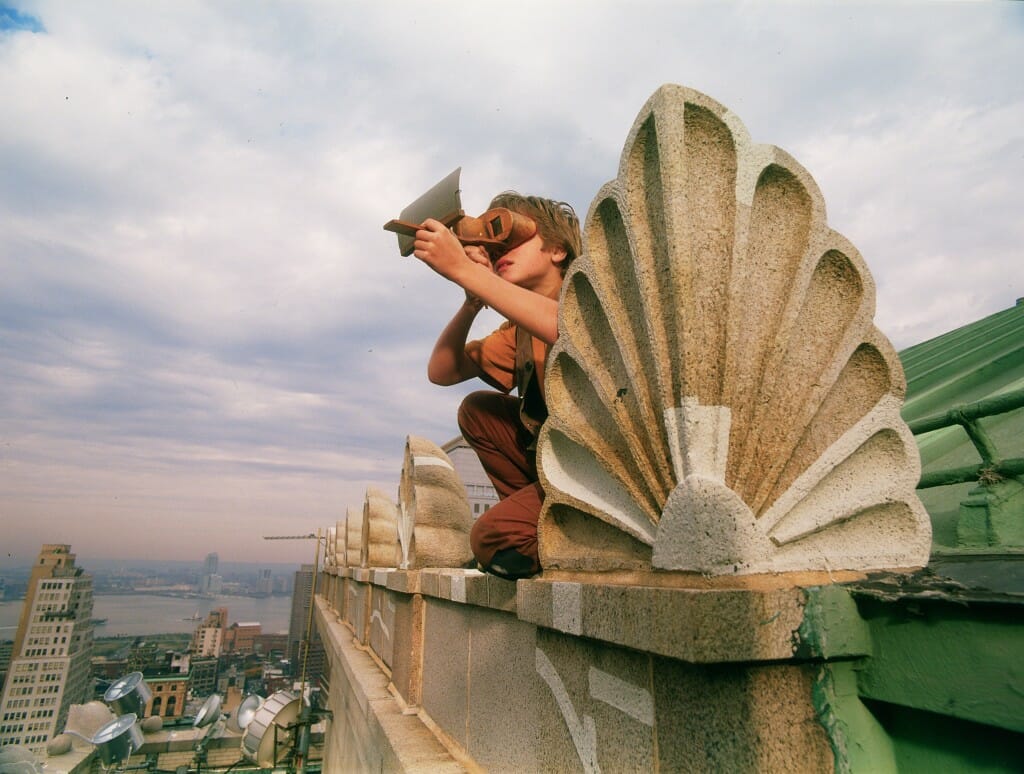
Tomas Minton (played by Peter Reznick) peers through a stereopticon at period views of New York City in Across the Sea of Time (3D)
1997
Super Speedway
Racing Wow. In 1997, Super Speedway became the first large-format film to capture on-track racing action at actual race speeds. The company developed camera mounts that enabled onboard filming from an Indy Car with an IMAX camera at speeds of up to 240mph. Filmed from an Indy Car supported by Newman-Haas Racing and driven by racing legend Mario Andretti, Super Speedway pulled audiences in the world of championship auto racing and accelerated them to a new giant screen high. More about Super Speedway. See also: Super Speedway: the Making of a Motion Picture Classic.
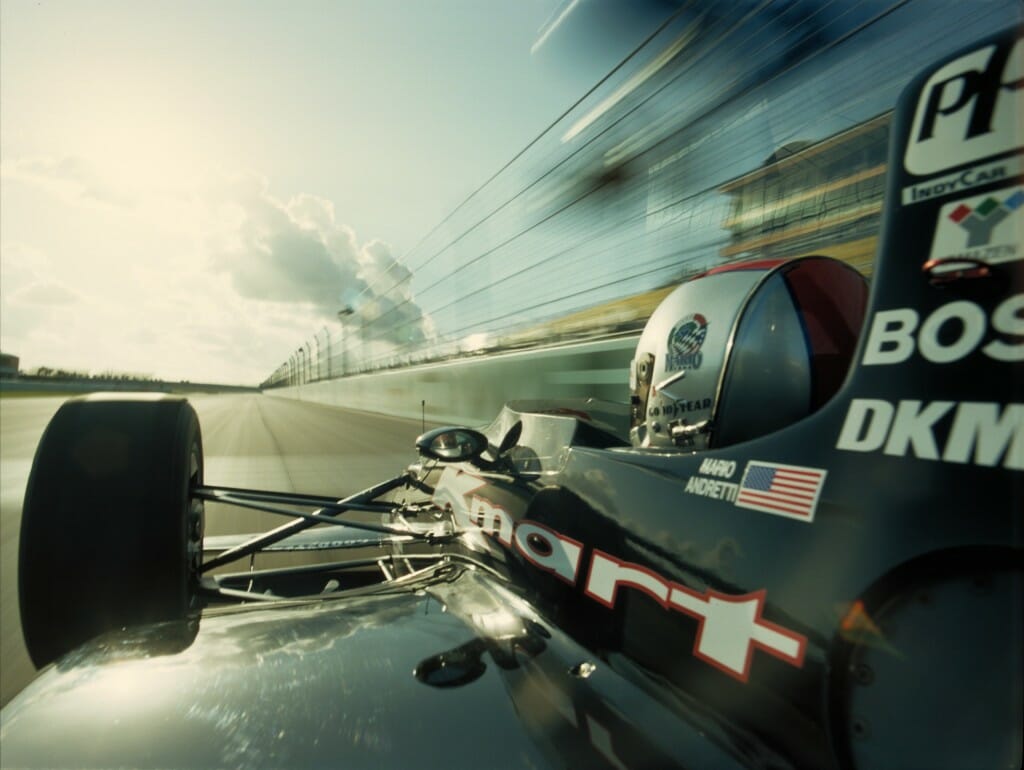
A view from the camera car driven by racing legend Mario Andretti for Super Speedway.
1998
Mark Twain’s America
The Real Mark Twain Stands Out. Mark Twain’s America 3D launches in New York at the Sony Lincoln Square IMAX theater. With the release of the film, the company delivers the first biography ever created for the giant screen. The film propels audiences into the life and times of America’s greatest humorist, drawing on Twain’s own words, period stereo photographs and rich re-creations by modern American history enthusiasts (including the Civil War, music, dance, riverboats and railways). Along with live-action footage, the production features stunning archival stereo (3D) photographs of Twain, his family and his era. More about Mark Twain’s America 3D.
1999
To the Deep
New Light in the Deep. The company completes work to integrate new high-powered HMI lights on the research submersible Alvin operated by Woods Hole Oceanographic Institution. Located on two retractable booms and one extendable arm, the lights give the sub dramatic new deep sea lighting and imaging capability. A test shoot is undertaken on hydrothermal vents in the deep Pacific. The work is part of Volcanoes of the Deep Sea, a production the company has underway in association with Rutgers University. More about Volcanoes of the Deep Sea.
2003
Volcanoes of the Deep Sea
Life Erupts 10,000 Feet Down. Volcanoes of the Deep Sea launches in giant screen theaters. Filmed in two oceans on 20-deep sea submersible dives, the production documents the work of scientists exploring the life and geology of deep sea hydrothermal vents on volcanically active Mid-Ocean Ridge. Produced in association with Rutgers University, the groundbreaking film puts startling IMAX images before audiences for the first time: vast colonies of strange chemosynthetic life thriving around chimneys spewing super-heated fluids from the Earth’s interior. The film includes a score by composer Michel Cusson, a collaboration that will continue. More about Volcanoes of the Deep Sea.
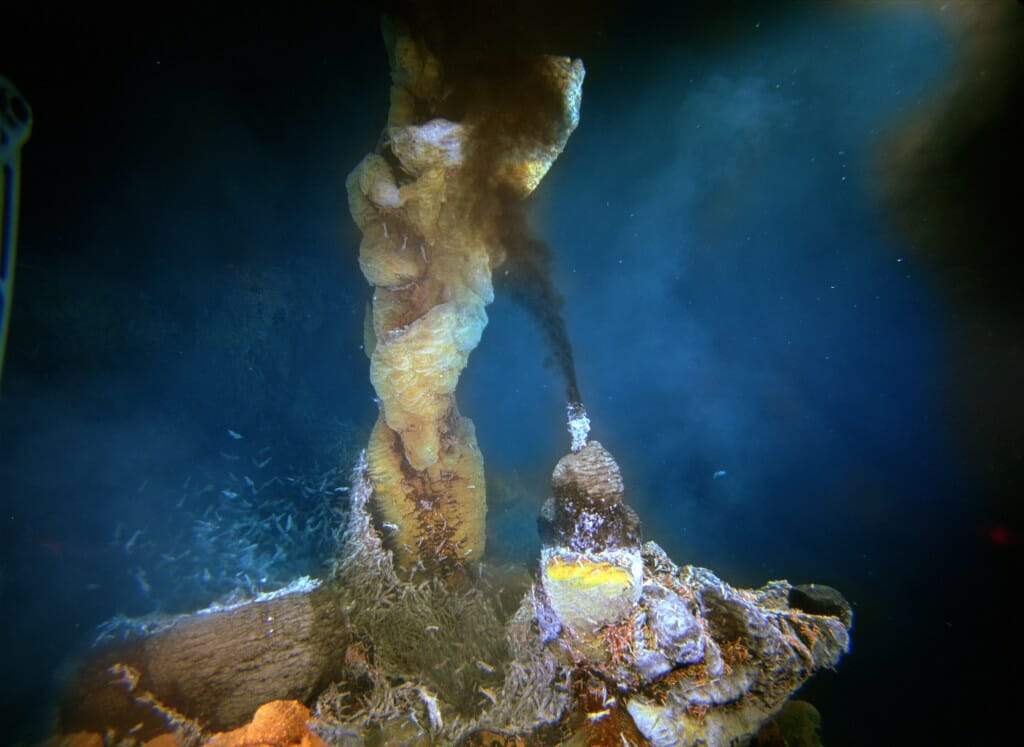
A black smoker with swarms of shrimp on the Mid-Atlantic Ridge; a scene filmed with an IMAX camera from the deep sea submersible Alvin. (Volcanoes of the Deep Sea)
2004
Fighter Pilot
Astounding Aerial Scale. Fighter Pilot: Operation Red Flag premieres at the Smithsonian’s Steven F. Udvar-Hazy Center in Washington D.C.. The project captures unprecedented scenes of one of the world’s largest and most demanding air combat training exercises. Seen through the eyes of one courageous young pilot, the experience is revealed onscreen in all its drama, scale and power. More about Fighter Pilot: Operation Red Flag.
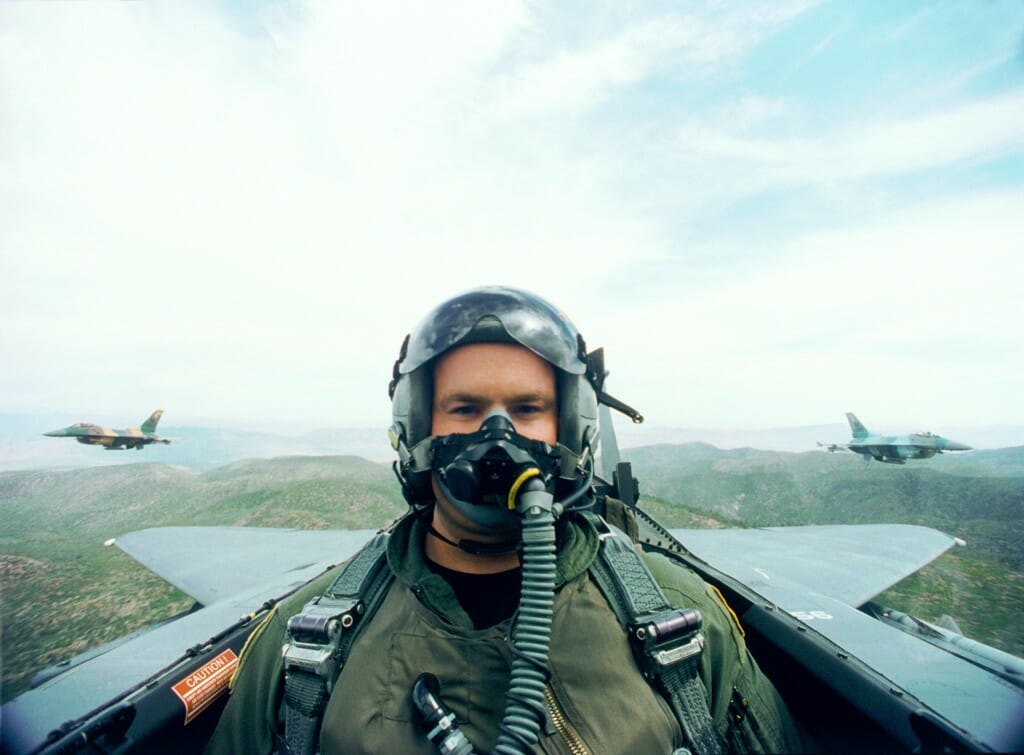
2010
The Ultimate Wave
Making Waves. Premiering at the California Science Center in L.A., The Ultimate Wave Tahiti 3D captures the adrenalin and visual magic of high-powered surfing. Filmed in the Tahitian islands, The Ultimate Wave features ten-time world champion Kelly Slater and friends in remarkable surfing sequences filmed in 3D for the giant screen—the first giant screen film to capture surfing action up close. The film weaves together surfing and science—exploring the physics of waves and tracing the evolution of the perfect surfing wave across the Pacific. More about The Ultimate Wave Tahiti 3D.
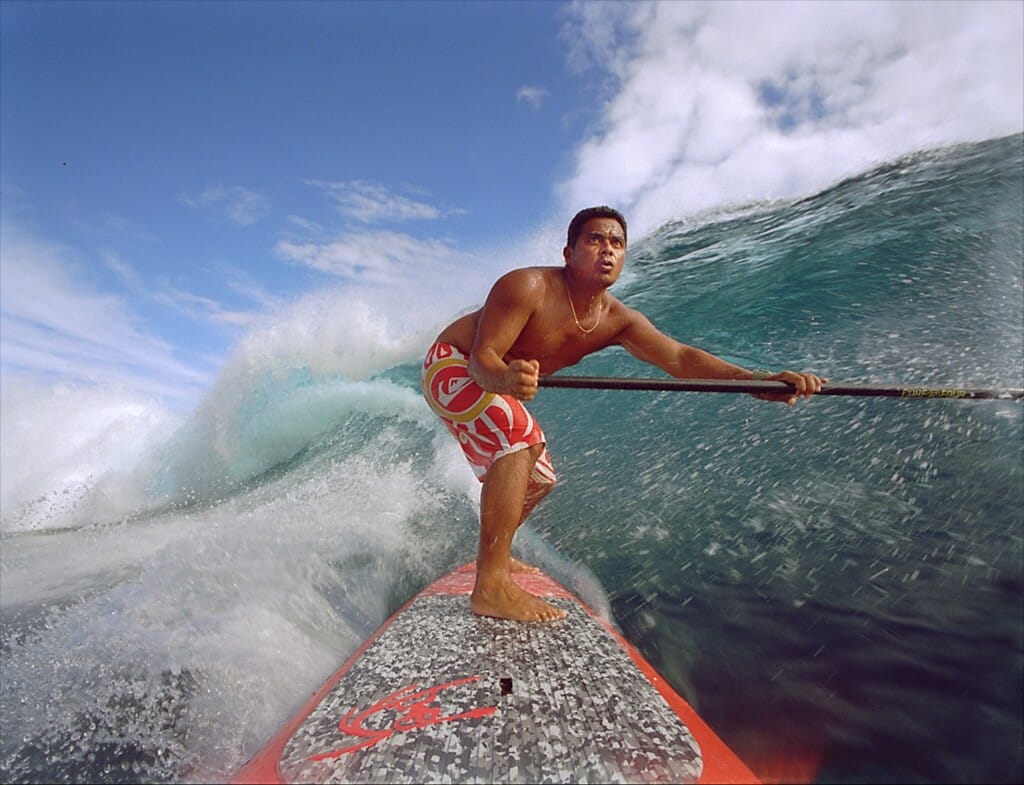
Tahitian surfer Raimana Van Bastolaer in a sequence from The Ultimate Wave Tahiti.
2010
Legends of Flight
A Jetliner is Born. Set against a century of aviation, Legends of Flight tracks the creation of a new-generation carbon fibre jetliner, the Boeing 787 Dreamliner. Captured over several years and compressed into minutes, this giant screen experience propels audiences along on the remarkable journey of creating a new aircraft—from design and fabrication to first-flight. The endeavour is seen through the eyes of the project’s chief test pilot, Mike Carriker. The film features advanced 3D animation and compositing, including sequences created with groundbreaking SANDDE animation technology from IMAX Corporation. More about Legends of Flight.
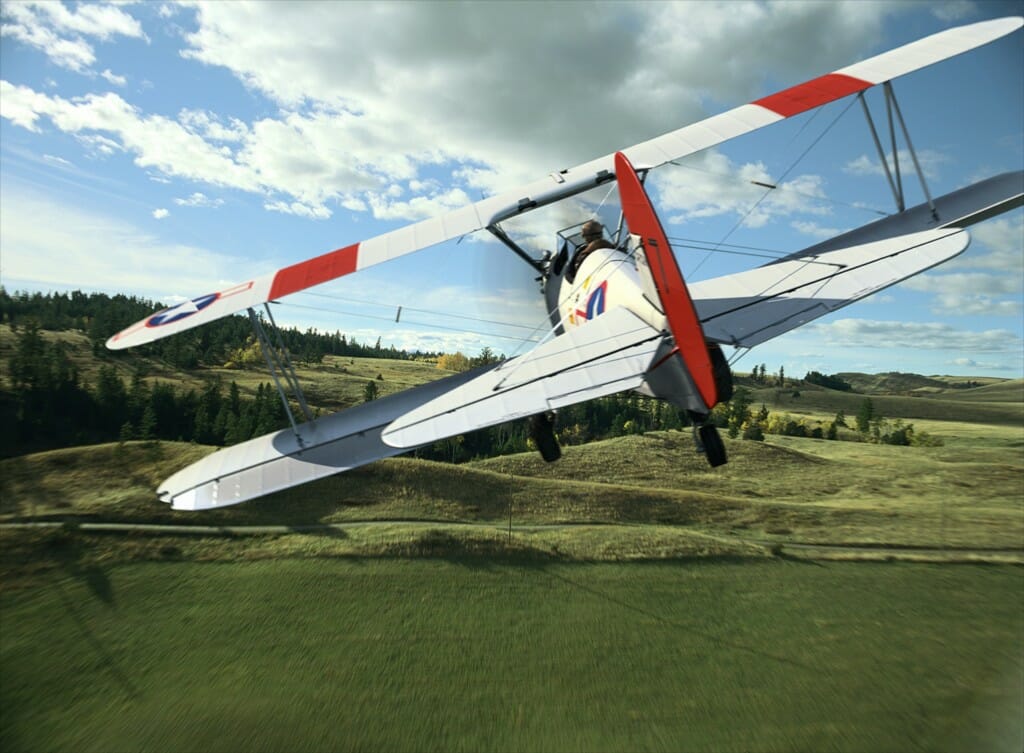
A Stearman bi-plane in a sequence from Legends of Flight.
2011
Rescue
Inside Disaster. Shaped around the work of disaster responders, Rescue 3D takes viewers into the center of the Haiti earthquake. Filmed for the giant screen, Rescue documents the response to the disaster on land, sea and in the air, providing first-hand views of one of the largest natural disasters and humanitarian crises of the 21st century, including a high-fidelity aerial perspective of the devastated region. More about Rescue 3D. About The Making of Rescue 3D.
2011
Rocky Mountain Express
Steam-Age Mega-Project. Propelling audiences on an authentic steam train journey through the Canadian west, Rocky Mountain Express provides a remarkable perspective on one of the greatest engineering projects of all time: the 19th century construction of a transcontinental railway link through the Canadian Rockies. Building on the filmmaker’s own passion for steam locomotion and his early working experience on the railway, Rocky Mountain Express takes full advantage of the giant screen medium and aerial shooting to relate an epic and highly kinetic story of engineering folly, sacrifice and nationbuilding. More about Rocky Mountain Express. About the making of the film: “The Road to Rocky Mountain Express“.
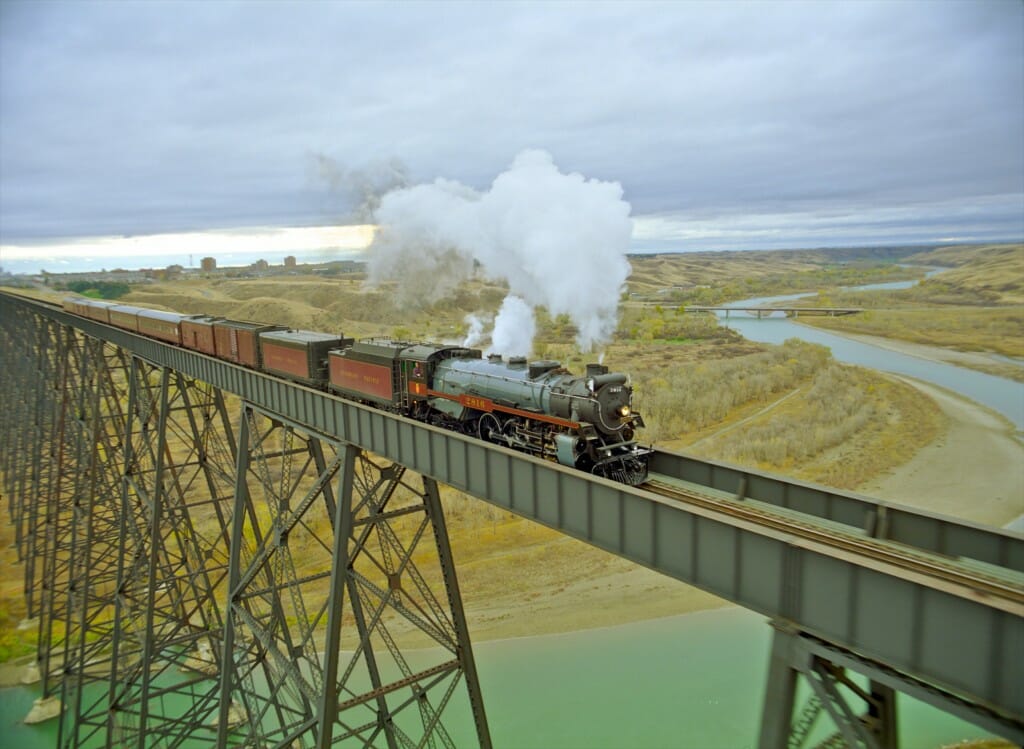
The 2816 crosses the Lethbridge Viaduct in a scene from Rocky Mountain Express.
2015
In Production
Our current productions will take audiences around the world by electric trolley, into maritime operations aboard an aircraft carrier and fleet, on a non-stop rail journey across America, and deep into the quantum fabric of the cosmos.
- On location with the crew filming 3D for Legends of Flight.

